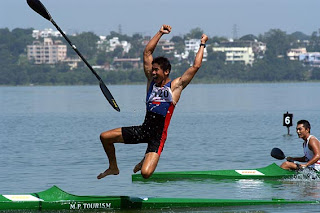 After the lighting and composition which was explained in the last two weeks, the third most important point is ‘Depth of Field’ (DoF) which gives pictures the virtual reality look. One needs to use the lens values that is the (focal length and the aperture) intelligently to get a better depth of perspective to one’s pictures.
After the lighting and composition which was explained in the last two weeks, the third most important point is ‘Depth of Field’ (DoF) which gives pictures the virtual reality look. One needs to use the lens values that is the (focal length and the aperture) intelligently to get a better depth of perspective to one’s pictures.






 The variables for the DoF is different as in when one gets closer to the subject frame the greater the DoF, or even when one lessens the diaphragm of the lens opening one gets a greater DoF. So to put it in lay man’s language you need to get closer or use a variable lens to get the subject closer to you to get a better DoF.
The variables for the DoF is different as in when one gets closer to the subject frame the greater the DoF, or even when one lessens the diaphragm of the lens opening one gets a greater DoF. So to put it in lay man’s language you need to get closer or use a variable lens to get the subject closer to you to get a better DoF.This DoF does not abruptly change from sharp to unsharp, but instead occurs as a gradual transition. In fact, everything immediately in front of or in back of the focusing distance begins to lose sharpness-- even if this is not perceived by our eyes or by the resolution of the camera.
This transition of sharpness from point A to point B and then to point C gives the viewer of your
pictures a virtual reality feel. Better way to put it is that this is the ‘Circle of Confusion’ (CoC).
This CoC becomes perceptible to our eyes, and this region is said to be outside the depth of field and thus no longer "acceptably sharp." So how do you get a good DoF for your picture? Just ensure that you get close to the subject’s focal point area to get the CoC.
Focal Length mm DoF- Front DoF –Rear
1. 10 mm 30 % 70 %
2. 20 mm 40 % 60 %
3. 50 mm 46 % 54 %
4. 100 mm 48 % 52 %
*** Picture of Bike Mirror and Lady Photographer - Courtesy Selvaprakash L.
































